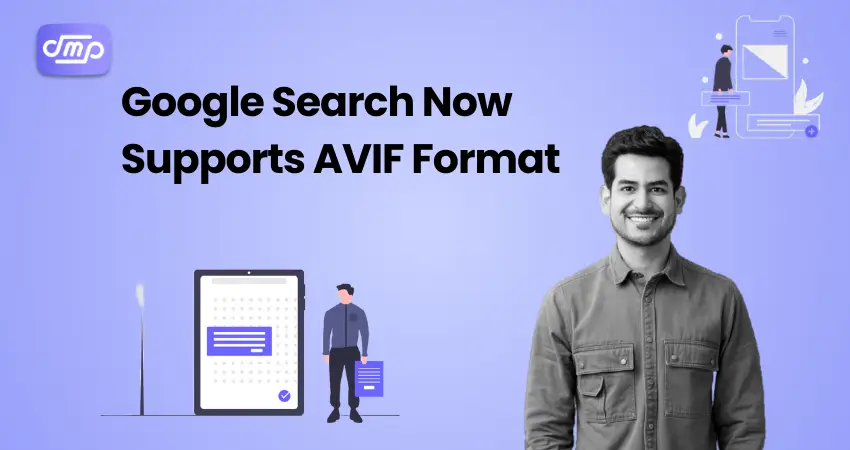
- August 31, 2024
- Google Search Updates
- Digital Marketing
What is AVIF?
Table of Contents
AVIF format (AV1 picture File Format) is an open and royalty-free picture file format that uses the AV1 compression codec. AVIF images can be up to ten times smaller than other image formats while maintaining excellent quality.
The AVIF format’s main distinguishing feature is its potential to achieve higher compression efficiency while preserving image quality. This is accomplished through a combination of advanced encoding techniques, including chroma subsampling and adaptive quantization, which allow the format to drastically reduce the amount of data necessary to represent a picture while maintaining visual integrity.
In addition to compression, the AVIF format has also sophisticated features like high dynamic range (HDR) imagery, a broad color gamut, and transparency. These properties allow the format to provide amazing visual experiences.
Characteristics of AVIF

- Compression: AVIF also employs the AV1 codec to deliver greater compression, saving over 50% of file size compared to JPEG and more than 30% compared to WebP. The novel encoding algorithms of the AV1 codec allow the AVIF format to achieve higher compression efficiency than prior formats, resulting in reduced file sizes while maintaining image quality.
- High-quality images: The AVIF format supports a variety of sophisticated features, including high dynamic range (HDR) imaging, a wide color gamut, and transparency, allowing it to provide beautiful visual experiences that exceed the capabilities of existing picture formats.
- Open-source, royalty-free: The AVIF format is based on the open-source AV1 codec, which has no patent licensing costs or restrictions. This produces an accessible and cost-effective AVIF format solution for developers and multimedia makers who want to use the latest image-compressing technologies.
- Broad compatibility and support: Major online browsers, such as Google Chrome, Mozilla Firefox, and Microsoft Edge, as well as image editing applications and content delivery networks (CDNs), support the AVIF file format. This support makes it easier for developers and content creators to adopt and integrate the AVIF format into their workflows.
Google Search Support for AVIF
Google announced that photos in the AVIF file format will now be eligible for display in Google Search and Google Photos, as well as on all devices that display Google Search results. AVIF will significantly reduce picture sizes while improving Core Web Vitals scores, especially Largest Contentful Paint.
How does AVIF help SEO?
- AVIF compresses images more efficiently than other formats, such as JPEG and PNG, resulting in reduced file sizes while maintaining quality. This results in speedier load speeds, which are a key ranking element in Google’s algorithm.
- Getting pages crawled and indexed is the first step towards a good SEO. Anything that reduces file size and speeds up web page rendering will allow search crawlers to get to the material faster, increasing the number of pages crawled.
- It also claims that quicker loading speeds allow Googlebot to crawl more pages and increase your website’s crawl efficiency, increasing your page’s loading speed.
- By lowering the amount of data required to display images, AVIF can help reduce bandwidth usage, which is especially useful for users on slower networks. This has the potential to improve global accessibility and user experience, ultimately leading to better SEO results.
Conclusion
In recent years, AVIF has become one of the most popular picture formats on the internet. With Google Search support for AVIF, any extra efforts to get the AVIF files indexed by Google can be avoided.











